


A Sustainable Solution For A Greener Future
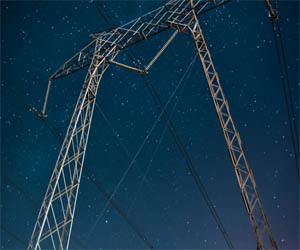
The pursuit of sustainable energy sources has expanded beyond electricity and transportation into the realm of heat generation. Renewable heat from waste is a pioneering approach that not only addresses waste management challenges but also offers an eco-friendly solution to meeting our heating needs. By harnessing the thermal energy potential in waste materials, we can contribute to a cleaner, more sustainable future.
Waste As A Heat Source
The concept of renewable heat from waste revolves around the idea that waste materials, including organic matter, can serve as a valuable heat source. This waste can be diverted from landfills, incinerated, or otherwise processed to release thermal energy. This heat can then be utilized for space heating, industrial processes, and various other applications.
The Role Of Biomass
One of the primary sources of renewable heat from waste is biomass. Biomass includes organic materials like wood, crop residues, and agricultural waste. When combusted or gasified, these materials release heat energy that can be harnessed for heating purposes. Biomass-based heating systems are a sustainable alternative to fossil fuel-based systems and contribute to a reduction in greenhouse gas emissions.
Biogas And Anaerobic Digestion
Another waste-to-heat method involves the conversion of organic waste into biogas through anaerobic digestion. In this process, microorganisms break down organic matter in the absence of oxygen, producing biogas, which is primarily composed of methane. This biogas can be used as a renewable fuel for heating, whether in residential, commercial, or industrial applications.
Municipal Solid Waste-To-Energy
Waste-to-energy facilities that convert municipal solid waste into electricity often capture and utilize the waste heat generated during the process. This waste heat can be channeled into district heating systems, thereby providing a sustainable and efficient way to meet the heating needs of communities.
Environmental And Economic Benefits
Renewable heat from waste offers numerous environmental and economic advantages. Firstly, it reduces the demand for non-renewable heating sources, such as natural gas and oil, which helps lower carbon emissions and combat climate change. Additionally, it contributes to waste diversion, reducing the pressure on landfills and minimizing their environmental impact.
From an economic perspective, utilizing waste materials for heat generation can create jobs in waste collection, transportation, and processing, as well as in the design and maintenance of heating systems. This not only bolsters local economies but also provides an opportunity for sustainable development.
Challenges And Considerations
While renewable heat from waste holds tremendous promise, it is not without its challenges. Factors such as waste composition, technology efficiency, and regulatory standards all play a crucial role in the successful implementation of these systems. Ensuring that waste materials are properly sorted and processed is essential for efficient and environmentally responsible heat production.
Renewable heat from waste represents a vital step toward a cleaner and more sustainable energy future. By harnessing the thermal energy potential in waste materials, we can reduce our dependence on fossil fuels for heating, lower greenhouse gas emissions, and contribute to responsible waste management. Continued investment in research, technology, and sustainable practices will be key to unlocking the full potential of renewable heat from waste and ensuring a greener, more sustainable world.
Unleashing The Potential Of Man's Best Friend
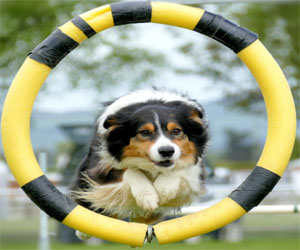 Agility competitions are among the most popular forms of canine performance. In these events, dogs must navigate through a challenging obstacle course, showcasing their speed, dexterity, and responsiveness to their owner's commands. The bond and coordination between the dog and owner are truly remarkable, as they work together to complete the course successfully.
Agility competitions are among the most popular forms of canine performance. In these events, dogs must navigate through a challenging obstacle course, showcasing their speed, dexterity, and responsiveness to their owner's commands. The bond and coordination between the dog and owner are truly remarkable, as they work together to complete the course successfully.
Obedience competitions focus on a dog's ability to follow commands and exhibit self-control. Dogs are evaluated based on their precision in executing commands like sitting, staying, heeling, and more. These competitions highlight not only the dog's obedience but also their intelligence and the dedication of their owners to training.
Canine freestyle, a more creative form of performance, combines obedience, tricks, and dance. Dogs and their owners choreograph routines set to music, incorporating a medley of tricks, spins, and synchronized movements. These performances are an impressive display of the bond between dog and owner, as they dance and dazzle the audience.
Search and rescue demonstrations are another critical aspect of canine performance. These events showcase the extraordinary talents of dogs in finding and aiding individuals in various scenarios, such as disaster-stricken areas or in the wilderness. The commitment and courage of these working dogs and their handlers are awe-inspiring.

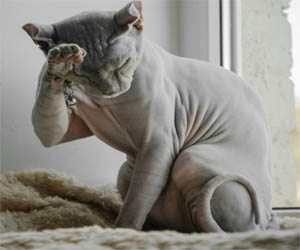
Nature's Enigmatic Canvas
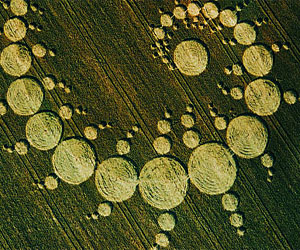 Geometric Precision
Geometric Precision
One of the most striking aspects of crop circle designs is the precision with which they are executed. The symmetry, mathematical ratios, and proportional accuracy found in many formations have left experts and enthusiasts alike in awe. The complexity of these patterns suggests a level of artistic and mathematical skill that challenges conventional explanations.
Symmetry And Symmetry Breaks
Symmetry is a common feature in crop circle patterns, with many formations exhibiting bilateral or radial symmetry. However, some crop circles also incorporate "symmetry breaks," where the pattern appears to intentionally deviate from perfect symmetry, introducing intriguing irregularities or asymmetrical elements.
Fractals And Self-Similarity
Fractal patterns are another fascinating component of crop circle designs. Fractals are complex shapes that exhibit self-similarity, meaning that they repeat similar patterns at different scales. These formations often evoke a sense of wonder, as the same design can be observed both in its overall shape and in its smaller components.
Incorporation Of Natural Elements
Some crop circle designs incorporate elements from the natural world, such as leaves, plants, and even flowing water. These designs can be particularly captivating, as they blend human creativity with the organic world, blurring the lines between nature and art.
A Closer Look At The Myths And Realities
 Mind Control: One of the most common myths perpetuated in pop culture is the idea of hypnosis as a tool for mind control. Characters are often depicted as helplessly falling under the spell of a hypnotist, who can make them do anything against their will. In reality, hypnosis does not grant this level of control over an individual. Hypnotized individuals remain aware and can choose whether or not to follow suggestions. Ethical hypnotists adhere to strict guidelines to ensure the well-being and autonomy of their clients.
Mind Control: One of the most common myths perpetuated in pop culture is the idea of hypnosis as a tool for mind control. Characters are often depicted as helplessly falling under the spell of a hypnotist, who can make them do anything against their will. In reality, hypnosis does not grant this level of control over an individual. Hypnotized individuals remain aware and can choose whether or not to follow suggestions. Ethical hypnotists adhere to strict guidelines to ensure the well-being and autonomy of their clients.
Zombie-Like Trance: Pop culture often portrays individuals in a hypnotic trance as being unresponsive and zombie-like, with vacant stares and robotic movements. In reality, individuals under hypnosis typically experience deep relaxation and heightened focus, but they remain aware of their surroundings and maintain their personalities.
Instant Solutions: Pop culture sometimes presents hypnosis as a quick and magical solution to complex problems. For example, characters may overcome deep-seated traumas or fears in a matter of minutes. In real-life therapeutic settings, hypnotherapy is a process that often requires multiple sessions to achieve meaningful and lasting results.
Realities Of Hypnosis:
Therapeutic Tool: While pop culture often exaggerates the mystical aspects of hypnosis, it's a valuable therapeutic tool used by trained professionals to address a wide range of issues. Hypnotherapy has been proven effective in smoking cessation, weight loss, stress reduction, phobia treatment, and more.
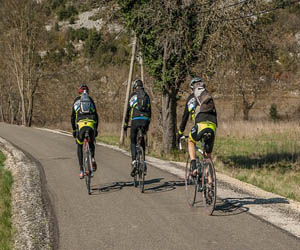
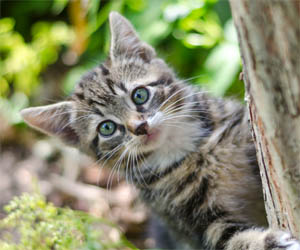




A Guide To Effective Dog Training
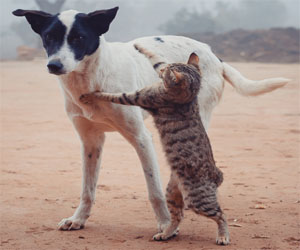 Positive Reinforcement
Positive Reinforcement
Positive reinforcement is one of the most effective methods for cultivating good behavior in your pup. This technique involves rewarding your dog when they exhibit desirable behavior. Treats, praise, toys, and affection are common rewards. When your pup associates good behavior with positive outcomes, they are more likely to repeat those actions.
Clicker Training
Clicker training is a precise and rewarding method for teaching dogs new behaviors. A small device, the clicker, emits a distinct sound that signals to your pup when they have performed the desired action correctly. This method enables clear communication and makes it easier for your pup to understand and learn commands.
Obedience Training
Obedience training focuses on teaching your pup essential commands like sit, stay, and come. These commands provide the groundwork for good behavior and ensure your pup's safety in various situations. Consistency and patience are key when practicing obedience training.
Crate Training
Crate training is an effective method for housebreaking your pup and providing them with a safe, comfortable space. Pups have a natural instinct to seek out enclosed spaces, and crate training takes advantage of this.
Understanding Feline Body Language
 2. Ears:
2. Ears:
A cat's ears are highly expressive and provide valuable insight into their mood:
Forward And Upright: Ears in this position indicate alertness and interest. Your cat is engaged and focused on something.
Flat And Backward: When a cat's ears are flat against their head, it usually signifies fear, aggression, or annoyance. This is a sign that the cat feels threatened or agitated.
3. Whiskers:
Whiskers play a role in a cat's sensory perception and body language:
Relaxed And Fanned Out: Whiskers that are relaxed and fanned out indicate contentment and relaxation.
Pulled Back Tightly: When a cat's whiskers are pulled back tightly against their face, it's often a sign of fear or aggression. The cat is trying to make itself appear smaller and less threatening.
4. Eye Contact:
Cats use eye contact to convey various messages:
Slow Blinking: A slow blink from a cat is a sign of trust and affection. It's often referred to as a "cat kiss" and is reciprocated by cat owners as a sign of love.
Direct Stare: Prolonged and direct eye contact can be seen as a challenge or a threat in cat language. It's best to avoid sustained eye contact in such situations.
5. Posture:
A cat's overall body posture provides important clues to their feelings:
Arched Back: An arched back, often with fur raised, is a sign of fear or aggression. It's a defensive posture that makes the cat appear larger and more intimidating.
Rolling Over: When a cat rolls onto its back, it may signal submission and trust. However, it's important to consider other cues, as some cats do this before playfully attacking.